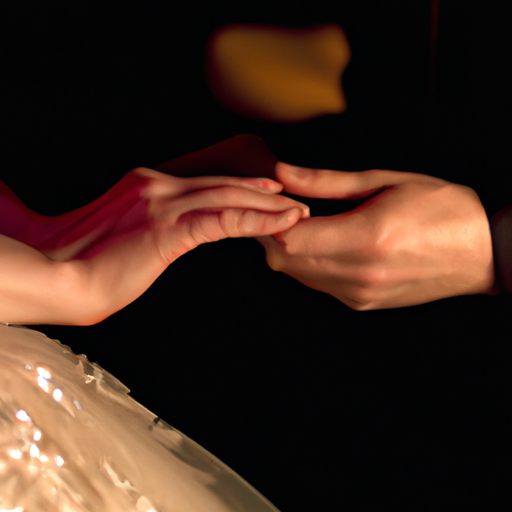Table of Contents
- Introduction
- How to Choose the Right Gear for Wedding Photography
- Tips for Capturing the Perfect Wedding Portraits
- How to Create a Professional Wedding Photography Portfolio
- How to Use Lighting to Enhance Your Wedding Photography
- Strategies for Working with Clients on Wedding Photography Projects
- Conclusion
«Capture the Moment: Learn Wedding Photography and Create Lasting Memories!»
Introduction
Wedding photography is a unique and rewarding profession that requires a special set of skills and knowledge. Learning how to become a successful wedding photographer can be a daunting task, but with the right guidance and dedication, you can become a master of the craft. This guide will provide you with the essential tips and tricks to help you get started in wedding photography. From understanding the basics of photography to mastering the art of capturing the perfect moment, you will learn how to create beautiful and timeless images that will last a lifetime.
How to Choose the Right Gear for Wedding Photography
Wedding photography is a special art form that requires the right gear to capture the perfect moment. Choosing the right gear for wedding photography can be a daunting task, but with the right knowledge and preparation, you can ensure that you have the right equipment to capture the perfect shots.
When selecting gear for wedding photography, the first thing to consider is the type of camera you will be using. Digital SLR cameras are the most popular choice for wedding photography, as they offer the highest quality images and the most flexibility when it comes to settings and lenses. If you are just starting out, a mirrorless camera may be a good option, as they are smaller and lighter than DSLRs, but still offer excellent image quality.
The next step is to choose the right lenses for your camera. Wide-angle lenses are great for capturing the entire scene, while telephoto lenses are ideal for capturing details and close-ups. Prime lenses are also a great option, as they offer excellent image quality and are usually more affordable than zoom lenses.
In addition to the camera and lenses, you will also need to consider other accessories such as tripods, flashes, and reflectors. Tripods are essential for keeping your camera steady and ensuring that your images are sharp and clear. Flashes are great for adding extra light to dark areas, while reflectors can help to soften harsh shadows.
Finally, you should also consider the type of lighting you will be using. Natural light is often the best choice for wedding photography, as it is soft and flattering. However, if you are shooting indoors, you may need to use artificial lighting such as studio strobes or LED lights.
Choosing the right gear for wedding photography can be a daunting task, but with the right knowledge and preparation, you can ensure that you have the right equipment to capture the perfect shots. By taking the time to research and select the right gear, you can ensure that your wedding photos will be beautiful and timeless.
Tips for Capturing the Perfect Wedding Portraits
1. Plan Ahead: Before the wedding day, discuss with the couple what type of photos they would like to have taken. Ask them to provide a list of family members and friends they would like to have photographed. This will help you plan the best way to capture the perfect wedding portraits.
2. Choose the Right Location: Select a location that is both beautiful and meaningful to the couple. Consider the time of day and the lighting conditions when choosing a location.
3. Use Natural Light: Natural light is the best light for wedding portraits. If possible, take the photos outdoors in the early morning or late afternoon when the light is soft and diffused.
4. Capture Candid Moments: While posed photos are important, candid shots of the couple and their guests can be just as meaningful. Look for moments of joy, laughter, and emotion to capture the true spirit of the day.
5. Take Multiple Shots: Take multiple shots of each pose to ensure you get the perfect shot. This will also give the couple more options when selecting their favorite photos.
6. Use Props: Props can add a unique touch to wedding portraits. Consider using items that are meaningful to the couple, such as a bouquet of flowers or a special piece of jewelry.
7. Have Fun: Above all, have fun! Weddings are a joyous occasion and your photos should reflect that. Encourage the couple to relax and enjoy the moment.
How to Create a Professional Wedding Photography Portfolio

Creating a professional wedding photography portfolio is essential for any wedding photographer looking to showcase their work and attract new clients. A portfolio should be an accurate representation of your style and skill level, and should be tailored to the type of weddings you specialize in. Here are some tips for creating a professional wedding photography portfolio.
1. Choose the Right Images: Select images that best represent your style and skill level. Make sure to include a variety of shots, such as close-ups, wide shots, and details. Also, include a mix of posed and candid shots.
2. Showcase Your Best Work: Choose your best images to showcase in your portfolio. This will give potential clients an accurate representation of your work.
3. Use Professional Editing Software: Use professional editing software to enhance your images and make them look their best. This will help you create a polished portfolio that stands out from the competition.
4. Include Client Testimonials: Include client testimonials in your portfolio to show potential clients that you have a track record of satisfied customers.
5. Create an Online Portfolio: Create an online portfolio to make it easy for potential clients to view your work. This will also help you reach a wider audience.
By following these tips, you can create a professional wedding photography portfolio that will help you attract new clients and showcase your work.
How to Use Lighting to Enhance Your Wedding Photography
Lighting is an essential element of wedding photography. It can be used to create stunning images that capture the beauty and emotion of the day. With the right lighting, you can create a romantic atmosphere, highlight important details, and create a unique look for your photos. Here are some tips for using lighting to enhance your wedding photography.
First, consider the time of day. Natural light is best for outdoor weddings, so plan your ceremony and reception for the time of day when the light is most flattering. If you’re having an indoor wedding, you can use artificial lighting to create a warm and inviting atmosphere.
Second, use a combination of natural and artificial light. Natural light can be used to create a soft, romantic look, while artificial light can be used to create dramatic effects. Experiment with different lighting setups to find the best combination for your photos.
Third, use light to highlight important details. Use a spotlight to draw attention to the bride and groom, or use a soft light to create a romantic atmosphere. You can also use light to create interesting shadows and silhouettes.
Fourth, use light to create a unique look for your photos. Try using colored gels to create a unique color palette, or use a light box to create a dreamy, ethereal look.
Finally, be creative with your lighting. Experiment with different angles and techniques to create unique and beautiful images.
By following these tips, you can use lighting to enhance your wedding photography and create stunning images that capture the beauty and emotion of the day.
Strategies for Working with Clients on Wedding Photography Projects
1. Establish Clear Expectations: Before beginning a wedding photography project, it is important to establish clear expectations with the client. This includes discussing the timeline, budget, and desired style of photography. It is also important to discuss the client’s expectations for the final product, such as the number of images they would like to receive and the format in which they would like to receive them.
2. Create a Detailed Plan: Once the expectations have been established, it is important to create a detailed plan for the project. This should include a timeline for the project, a list of tasks to be completed, and a list of any equipment or supplies that will be needed.
3. Communicate Regularly: Throughout the project, it is important to communicate regularly with the client. This includes providing updates on the progress of the project, answering any questions they may have, and addressing any concerns they may have.
4. Take Time to Get to Know the Client: Taking the time to get to know the client can help to ensure that the project is successful. This includes learning about their preferences and style, as well as understanding their vision for the project.
5. Be Flexible: It is important to be flexible when working with clients on wedding photography projects. This includes being willing to adjust the plan as needed and accommodating any changes that the client may request.
6. Provide Quality Work: Finally, it is important to provide quality work. This includes ensuring that the images are of the highest quality and that the final product meets the client’s expectations.
Conclusion
Learning wedding photography is a rewarding and challenging experience. It requires dedication, practice, and a willingness to learn from mistakes. With the right attitude and resources, anyone can become a successful wedding photographer. Start by researching the basics of wedding photography, such as lighting, composition, and posing. Then, practice with friends and family, and eventually build up a portfolio of wedding photos. Finally, network with other wedding photographers and attend workshops to stay up to date on the latest trends and techniques. With hard work and dedication, you can become a successful wedding photographer.


































